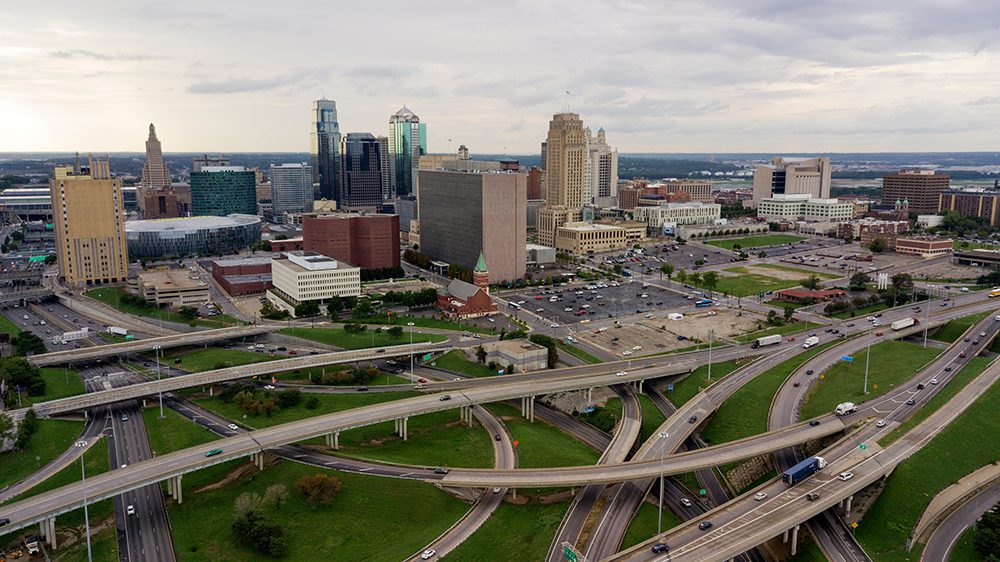Infrastructure Bill Challenges with Economic and Environmental Limitations

Changes are underway to America’s infrastructure as President Biden signed into law a $1.2 trillion bipartisan infrastructure bill in November. This legislation will help to reconstruct and improve communities across the country over the next five years. The new law focuses on a variety of infrastructure improvement projects to support better roads, bridges, water systems, and broadband connectivity among other infrastructure opportunities.
The infrastructural foundation upon which America is built has been a long-standing concern. The American Society of Civil Engineers conducts a report on the country’s infrastructure every four years, with 2021 receiving a C- score. The issues evaluated in this report include roads, bridges, railroads, water systems, energy, dams, broadband internet access, parks and ports and how they perform when it comes to status, maintenance, and deterioration.
The Riverview Crossroads project in Edwardsville, Kansas is an example of an infrastructure project opening the door to better access management and anticipated development surrounding the area. BHC’s involvement with the Neiman Road reconstruction project has also brought new public works amenities to the City of Shawnee, aiding congestion improvement and allowing for a more pedestrian-friendly space. These public works projects give a glimpse into what major infrastructure projects making their way into different parts of the nation to improve access, road conditions and development opportunities.
Traditional Federal funding programs are looking at around a 25% increase above the previously authorized amounts. There will also be new funding programs aside from the traditional ones that provide entirely new opportunities to rejuvenate and expand infrastructure. With these new opportunities, this law will funnel extra money into competitive grants that cities across the United States can compete for.
This new legislation will give more opportunities for underserved and rural parts of the country to also gain access to better connectivity. Major fiber design projects across the nation will help serve communities with high-speed internet access. BHC has recently implemented a Fiber to the Home (FTTH) network in Springfield, Missouri, connecting thousands of residents to high-speed internet. This is just one example of the reality this bill could bring to millions of more Americans. Social equity and fair access to this funding are some areas that will be addressed to supply parts of the country with these programs who need them the most. On top of this direct impact also comes greater focus on environmental improvement opportunities in the process.
Economic Outlook
One main question the professionals have is — how much of an increase in activity and projects can the design and construction industry handle? From a public works perspective, this infrastructure bill means more construction inspection opportunities for workers. For example, the Kansas Department of Transportation is actively searching to fill roles for inspectors and other construction workers who are in short supply. These workers are in high demand and will likely help create more jobs for those in the AEC industry when projects become available.
Inflation’s current role in the outlook of the infrastructure bill could mean that the allocated dollar amount to fund infrastructure improvement projects becomes absorbed in higher bid prices rather than going directly toward completing a greater number of projects. This could dilute the true impact in terms of making infrastructure safer, smoother and more efficient. The cost of higher bid prices due to inflation could mean that the projected 25% increase in projects realistically could come closer to 10% with paying more for the construction work and the current limited labor pool.
Raw material prices and supply chain shortages have skyrocketed over the past two years and will continue to have an impact on total project cost as prices start to level out. The domino effect of labor shortages and service demands shifting more so to goods during the pandemic has left materials like oil, lumber, metals and plastics in a constant bind. Money allocated to infrastructure will most likely also be drained from high raw material costs as we continue to see the rippling effects of distribution disruption.
More money allocated to the AEC industry means more opportunities for businesses small and large alike. As cities nationwide begin taking advantage of these additional funds over the next five years, BHC is looking to be a part of many of these projects and have a greater opportunity to do more design work given the increase in project opportunity. Investing money into infrastructure will help drive successful communities by employing more businesses to perform the needed infrastructure projects and creating a more robust infrastructure base that allows our economy to do business more efficiently. The economic foundation of the United States will become stronger as this will allow for existing commerce to operate on a larger scale.
Environmental Impact
One of the main focuses of the law is limiting the negative environmental impact of infrastructure reconstruction and improve the overall sustainability of materials used in the process. While detailed information has not yet been released, there are speculations as to the different approaches that could be potentially receive funding through this legislation in terms of environmental impact.
Investing in electric vehicle charging structures and building it out so that it becomes the prevalent form of powering vehicles is on the list of items to complete in the next five years. The law addresses specific types of spending, which includes $7.5 billion towards electric vehicle charging stations and $7.5 billion allocated to replacing gas fueled school buses with electric ones in rural and low-income communities to reduce emissions and increase transportation reliability.
The push towards fully digital processes could also be in the plan when thinking about sustainable ways of conducting business. Many engineering firms have begun transitioning from traditional paper plans and moving to online software to send, receive and collaborate on important documents concerning a project. Not only is this shift better for the environment, but it also helps support the project with better workflow efficiency. Augmented reality software is also intertwined with the digital expansion used to eliminate traditional paper plan processes. Modeling projects using augmented reality help to bring new perspectives on final results, saving time and money on potential errors later on. The augmented reality space has seen exponential growth over the past few years and its position in civil engineering will certainly help professionals reach new technological limits.
The role in which the engineering and construction companies conduct business also plays a significant part in the environmental impact of a project. Simple changes such as using electric or hybrid vehicles instead of diesel-powered ones could greatly reduce the carbon footprint of companies working to improve the countries infrastructure. A challenge facing the businesses that will be impacted by this law is how current business practices will need to change in order to accommodate any requirements put in place by the Federal Government. AEC businesses will be looking to find ways to improve their chances of being selected for different project types as we learn more about the specifics of these programs. BHC will continually work towards understanding the intricacies of how to secure funding for our government clients, playing a bigger role in designing and constructing these new investments, and improving our business operations to best serve our community.
